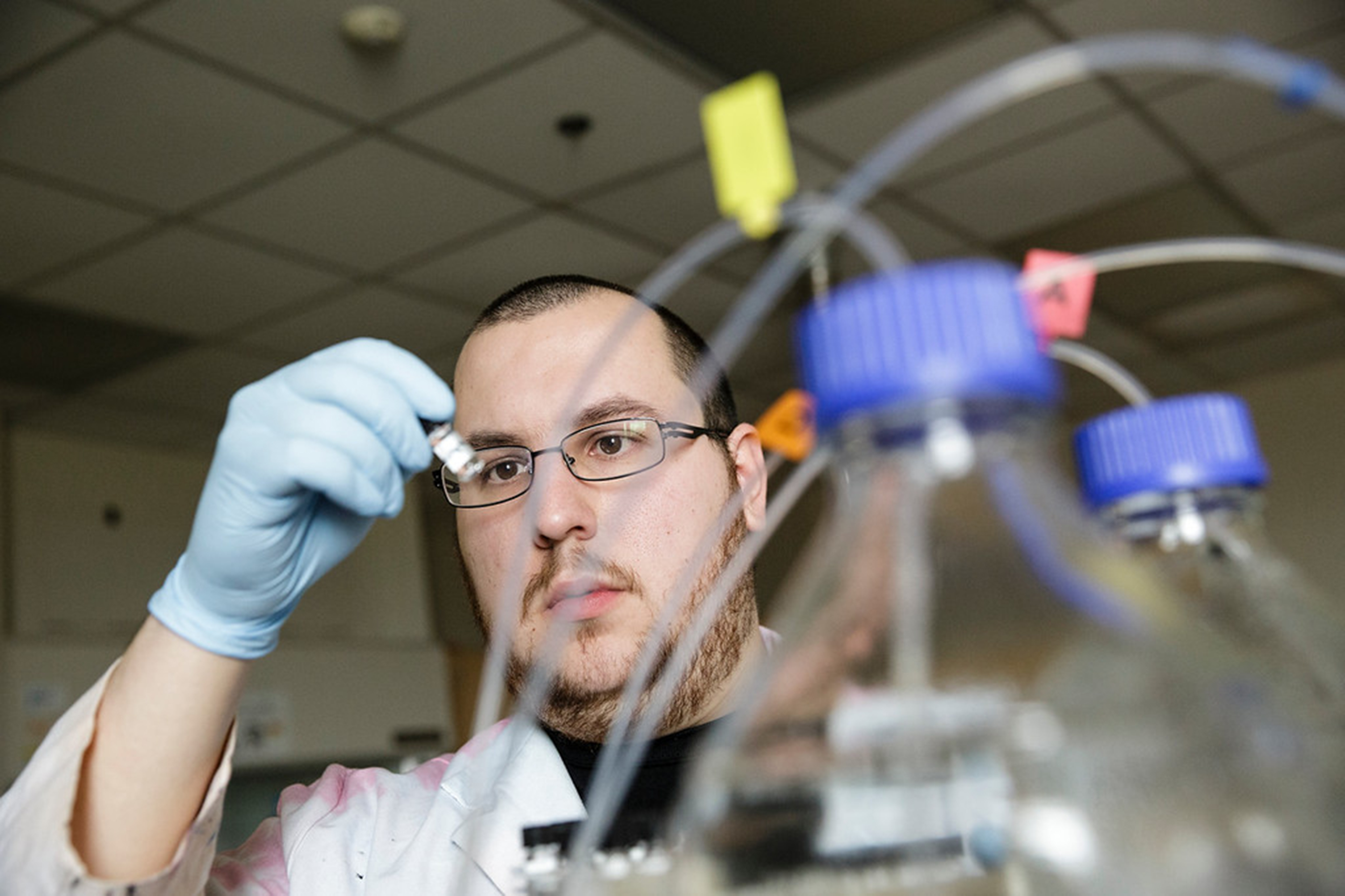REFLECTION: Sweet Talkin'
— by Daniel Martin '17, senior biochemistry major
Sometimes there’s more in a can of soda than what’s listed on the label. For me, there was quite a bit more: the opportunity to collaborate with an Alvernia University professor on research and present the findings at the national American Chemical Society (ACS) Conference in San Francisco.
Last summer I conducted research under the guidance of Dr. Rosemarie Chinni, professor of chemistry and forensic science, and chair of the Science and Mathematics Department. I did the research under Alvernia’s Student Undergraduate Research Fellows (SURF) program, which enables Student Fellows to collaborate with Faculty Scholars.
Over a 10-week period, I analyzed 51 beverages for the presence of caffeine and the artificial sweeteners saccharin, aspartame and acesulfame potassium. The beverages ranged from name brand to store brand and from regular to diet, and included seltzer waters and single to-go packets.
This kind of analysis is performed through a technical process called high-performance liquid chromatography (HPLC). HPLC injects a small sample of liquid in a column at high pressure to separate, identify and quantify each component in a mixture. The column consists of microparticles, and the component separation is caused by interactions between the component molecules and the microparticles. The molecules are then detected by a photodiode array detector (PDA).
By analyzing the liquids in this way, I was able to calculate exactly how many milligrams per bottle were present in the beverages. Understanding liquid components isn’t just academic; knowing what’s in a drink can allow people to make more informed choices about what they want to consume.
Dr. Chinni felt that my findings were compelling enough to present at a national conference. So she helped me apply for internal development and research funds that allowed me to attend the ACS National Meeting and Exposition in San Francisco in April. I presented my findings as part of the ACS Undergraduate Program, along with 1,500 other students.
Conducting the research and presenting my findings were life-changing experiences for me. Doing hands-on, independent work engaged me in a way that classroom learning never could. I learned how to develop, run and analyze a research project. I gained experience in keeping a professional lab manual. And I grew in my ability to manage my time and work independently.
Attending the ACS conference provided more new experiences. For one thing, it was the first time I had traveled by plane and had been far away from my family. It was also interesting to share my research with chemists of different ages and experiences and to see how they responded to it.
I’m grateful for the experience, which was something I’ll never forget. I’m now looking at the possibility of getting the research published. And I’m thinking I’ll want to go on to graduate school, all because I wanted to find out what was in my can of soda.
